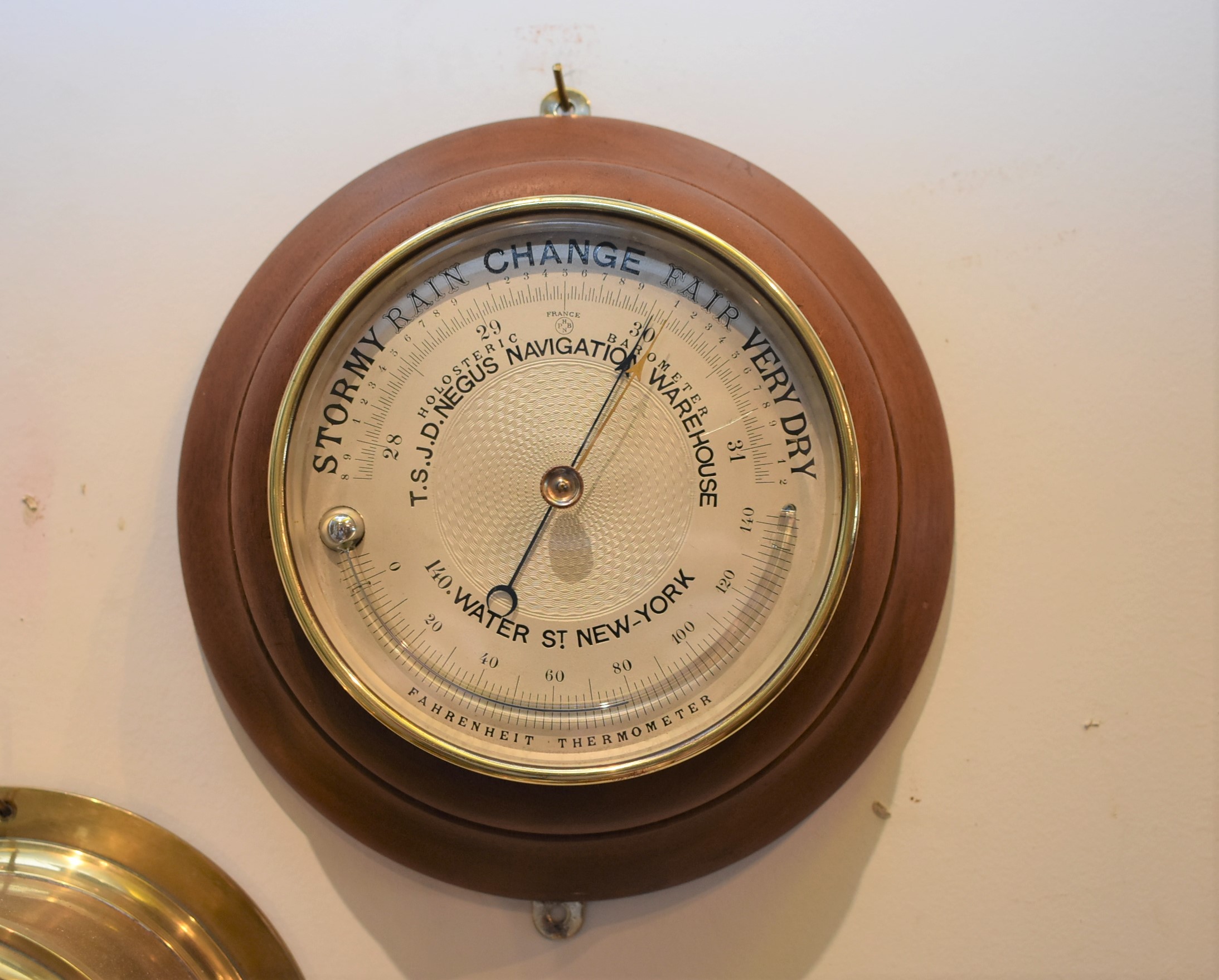Antique Barometers and the Mystery of Barometric Pressure
Antique barometers helped scientists to unlock the mysteries of barometric pressure, and in doing so opened a whole world of scientific discoveries. What is barometric pressure? In simplest terms barometric pressure is the measure of the amount of weight the atmosphere is exerting at a point on Earth. Barometric pressure varies from location to location and it can have very significant effects on just about everything around you. Typically at higher elevations barometric pressure drops as the atmosphere gets thinner, and at lower elevations it increases.

Barometric pressure also has an influence on the weather, and scientists have learned to use the measurement of barometric pressures to predict weather patterns. If you’ve ever wondered how the weather guy on television makes his predictions, a lot of it has to do with barometric pressure. Did you know that barometric pressure helps pilots as well? That’s right, since barometric pressure changes according to altitude instruments on planes rely on it to some extent for determining how high they are flying. Of course, there’s more to it than that, but the fact that planes use barometric pressure as part of their navigation is quite interesting, especially when you consider how the first barometers were constructed.
Air Has Weight?
You may not realize it, but air has weight. It may seem to have no substance at all, but it’s made of molecules, just like everything else around you. The difference is that the molecules in a gas are much less dense than what you would find in a solid. And while those molecules are more spread out, when you look at the sheer volume of atmosphere above our heads, all of those spread out molecules add up to a lot of weight. On average, at sea level, you are subjected to almost 15 lbs. of pressure per square inch. You don’t feel it because our bodies adapted to survive in this environment, but even though you don’t feel it, that pressure is there.
Barometers Measure Barometric Pressure
Believe it or not, many modern barometers work on the same principle as their more primitive ancestors. Sure, refinements have been made, and the measurements they produce are more precise, but barometers ultimately rely on one thing, mercury. The simplest explanation is that a barometer consists of a sealed glass tube that sits atop a try of mercury. As barometric pressure increases the mercury is forced up the tube indicating a rise in pressure. Years of refinement allowed scientists to discover a way to correlate the rise of mercury with a specific increase in pressure, allowing for more and more accurate measurements.
While mercury barometers were the first type used, they had limitations since mercury was expensive, toxic, and it couldn’t be used on moving objects accurately. Aneroid barometers became common and since they used a metal vacuum disc inside of a tube, but while portable, these barometers were not as accurate as their mercury based predecessors. Today, most barometers are digital, using advanced electronics to detect differences in pressure.

Early Barometers Were Often Quite Ornate
Early barometers were expensive and were typically owned by wealthy people. As such, they were often very beautiful with intricate designs that made them more of a work of art than a simple scientific instrument. These barometers can often be seen gracing people’s homes today, their innate allowing them to outlive their original purpose.
